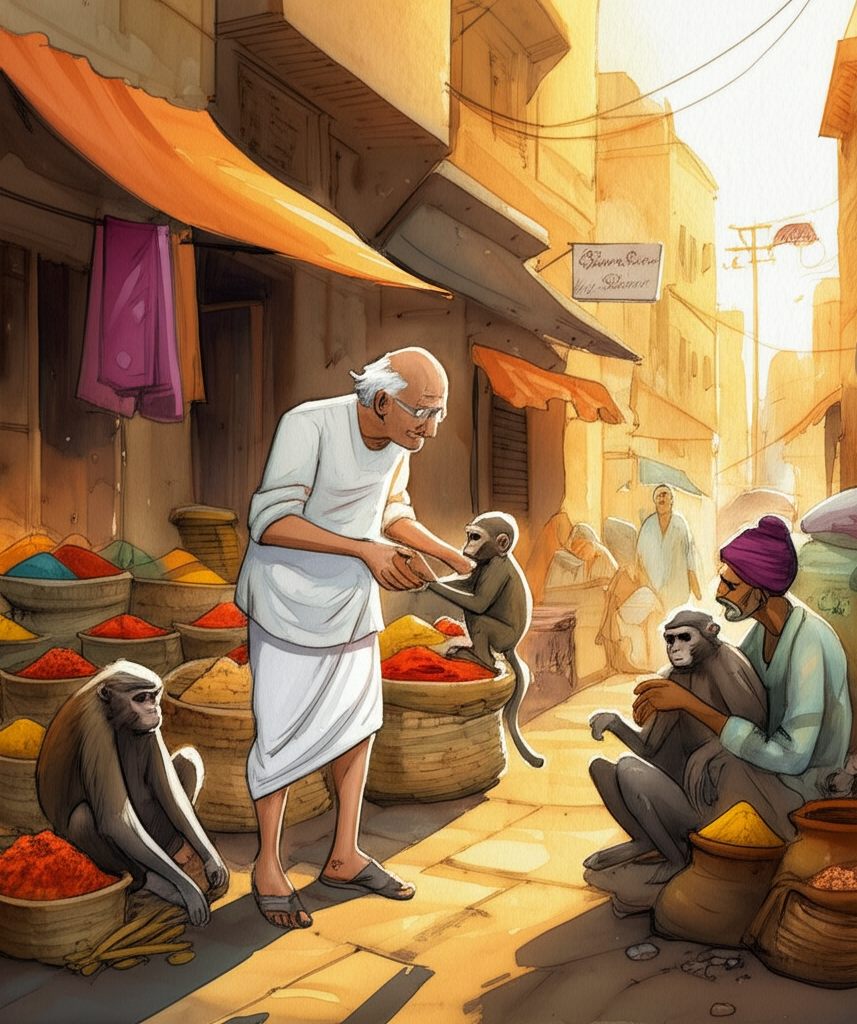
Grandfather bought Tutu from a street performer for ten rupees. The man had three monkeys. Tutu was the smallest, but the naughtiest. She was usually tied up. The little monkey looked so sad with a collar and chain that Grandfather thought she would be much happier at our house. Grandfather loved having unusual pets. It was something I, who was eight or nine, always wanted him to do.
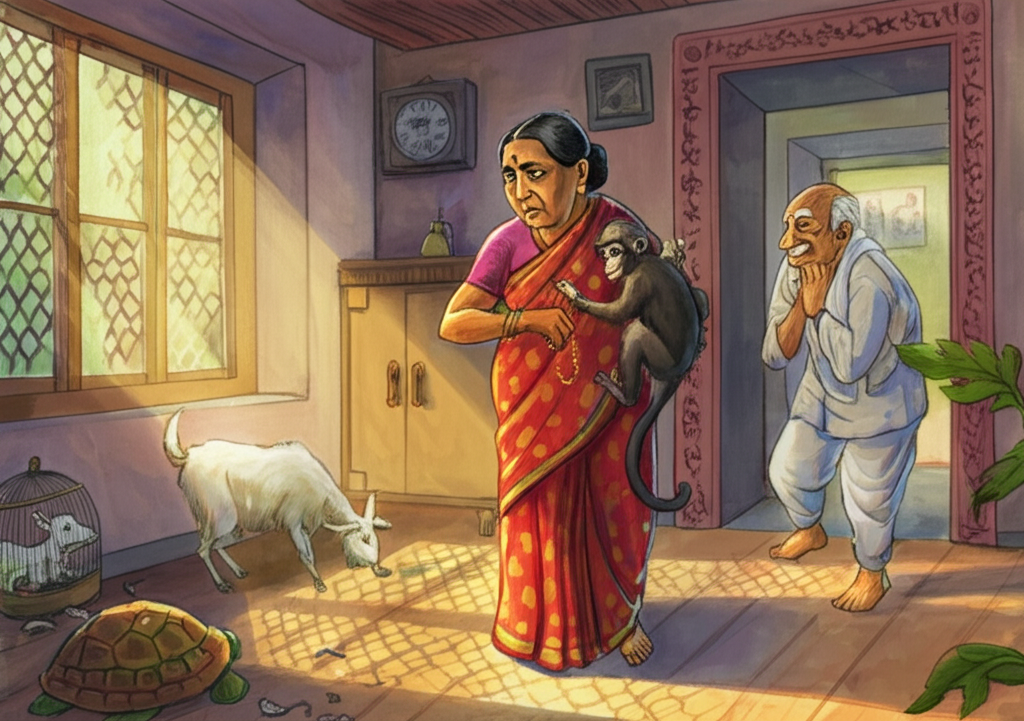
Grandmother didn’t want a monkey in the house at first. ‘You already have lots of pets,’ she said, talking about Grandfather’s goat, some white mice, and a little turtle.
‘But I don’t have any,’ I said.
‘You’re naughty enough for two monkeys. One boy in this house is all I can handle.’
‘But Tutu isn’t a boy,’ Grandfather said happily. ‘She’s a little girl monkey!’
Grandmother agreed. She always wanted a little girl in the house. She thought girls caused less trouble than boys. Tutu would show her she was wrong.
She was a cute little monkey. Her bright eyes sparkled with mischief under her eyebrows. And her teeth, which were white like pearls, showed when she grinned, which scared Aunt Ruby, who was already jumpy because of Grandfather’s pet snake. But this was my grandparents’ house, so aunts and uncles had to deal with our pets.
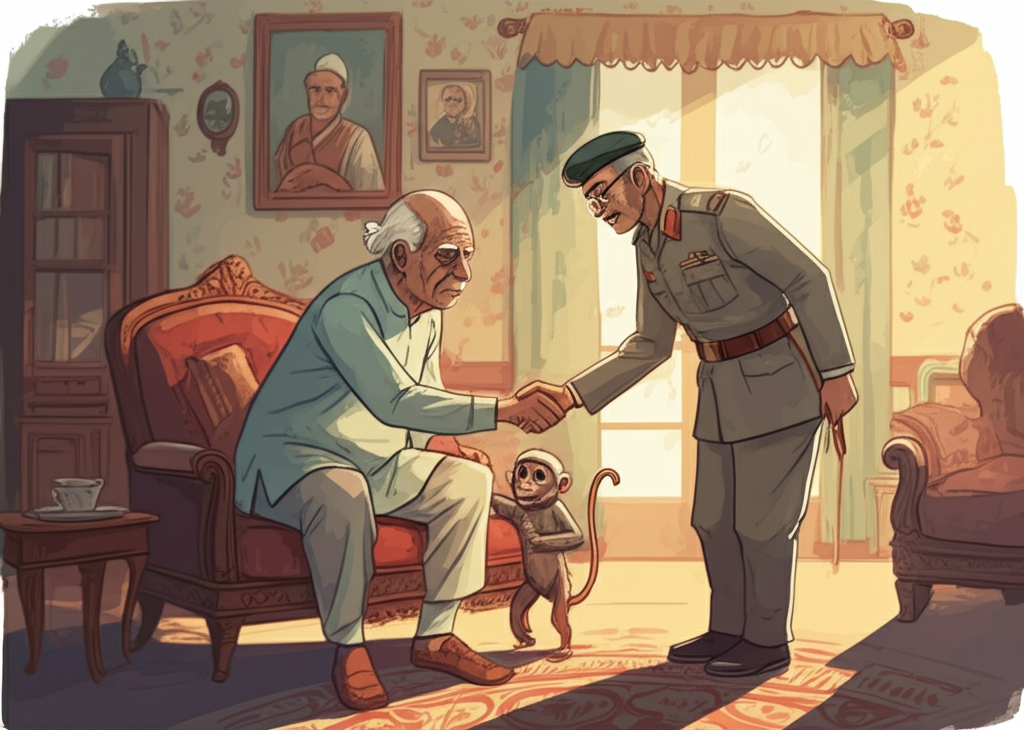
Tutu’s hands looked old and wrinkled, like they had been left in the sun for a long time. One of the first things I taught her was to shake hands, and she wanted to shake hands with everyone who visited. Grumpy Major Malik had to bend down and shake Tutu’s hand before he could go into the living room, or else Tutu would climb on his shoulder and mess up his hair and play with his mustache.
Uncle Benji hated all our pets and especially didn’t like Tutu, who was always making funny faces at him. But Uncle Benji didn’t keep a job for very long, so he depended on Grandfather being nice to him. He had to shake hands with Tutu, like everyone else.
Tutu’s fingers were quick and sneaky. And her tail made her look good (Grandfather thought a tail made anyone look good!), and it also worked like a third hand. She could hang from a branch with it, and she could use it to grab any yummy treat that was too far away for her hands.
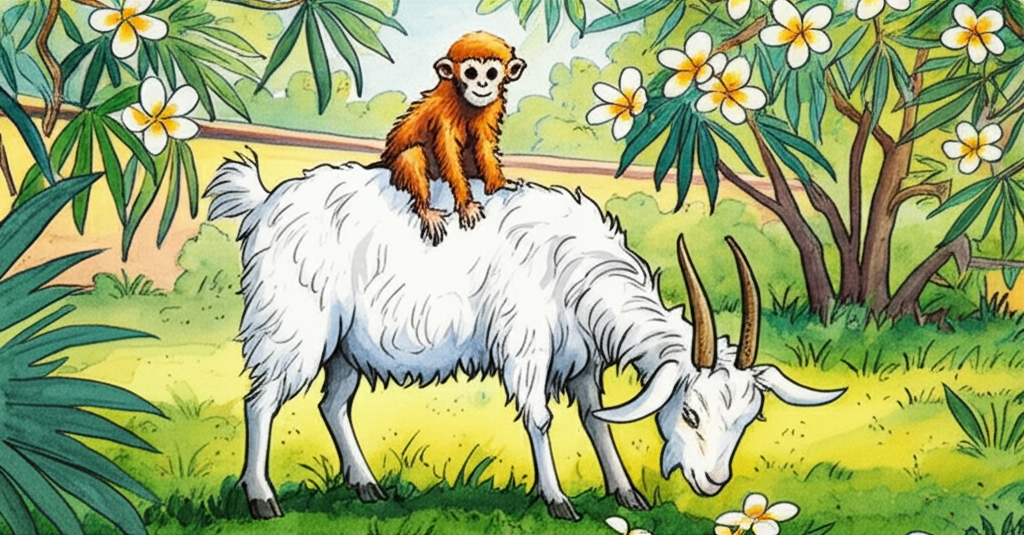
Still, Grandmother didn’t want Tutu running around the house all the time. Tutu had to spend her nights in the shed outside, with the goat. They got along well, and soon Tutu was sitting on the goat’s back while the goat walked around the backyard looking for grass.
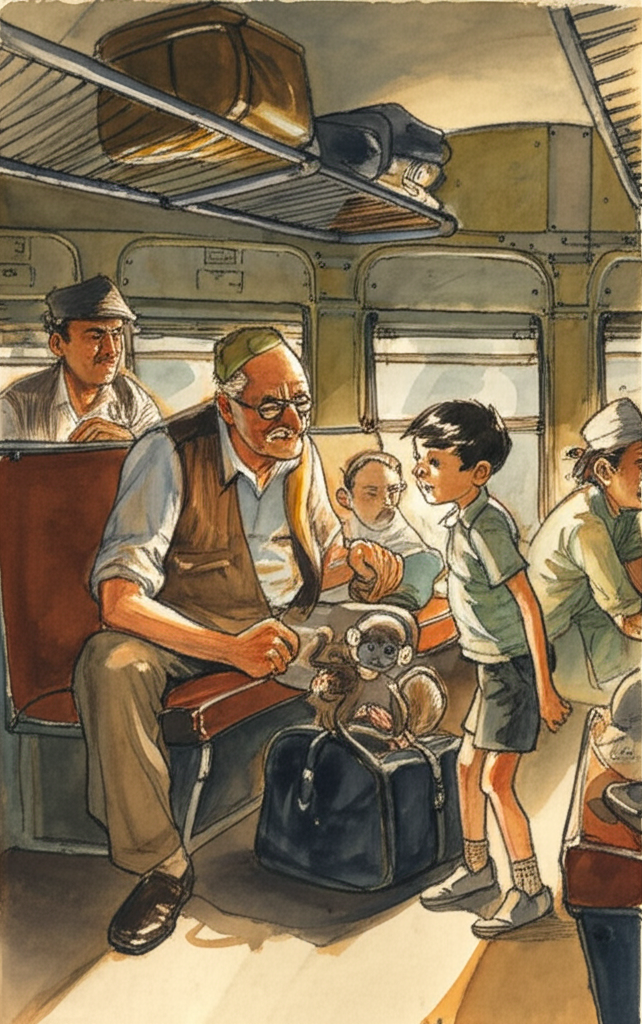
One day Grandfather had to go to Meerut to get his money from his retirement, and he decided to take Tutu and me with him so we wouldn’t get into trouble, he said. To keep Tutu from running around on the train and bothering people, she had a big black travel bag. We put some straw at the bottom, and it became her special place.
Grandfather and I paid for our tickets, and we took Tutu along as our carry-on bag.
Tutu had enough space to peek out of the bag sometimes and eat bananas and cookies, but she couldn’t reach her hands through the opening, and the bag was too strong for her to bite through.
Tutu trying to get out just made the bag roll around on the floor or sometimes jump up in the air. This made a lot of people curious and they gathered around at the train stations in Dehra and Meerut.
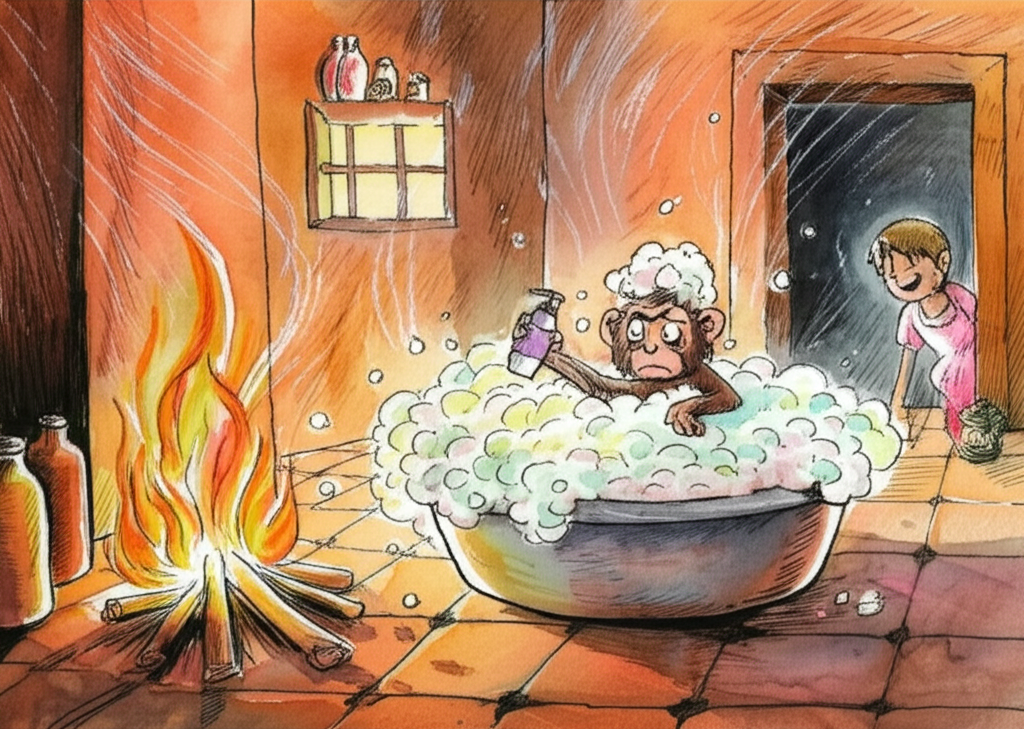
Winters in North India can be very cold. Tutu loved when Grandfather gave her a big bowl of hot water for a bath in the evenings. Tutu would carefully test the water with her hand, then slowly step into the bath, one foot and then the other (like she saw me doing) until she was in the water up to her neck.
When she was comfortable, she would take the soap in her hands or feet and rub herself all over. When the water got cold, she would get out and run as fast as she could to the kitchen fire to dry herself. If anyone laughed at her while she was doing this, Tutu would get upset and wouldn’t finish her bath.
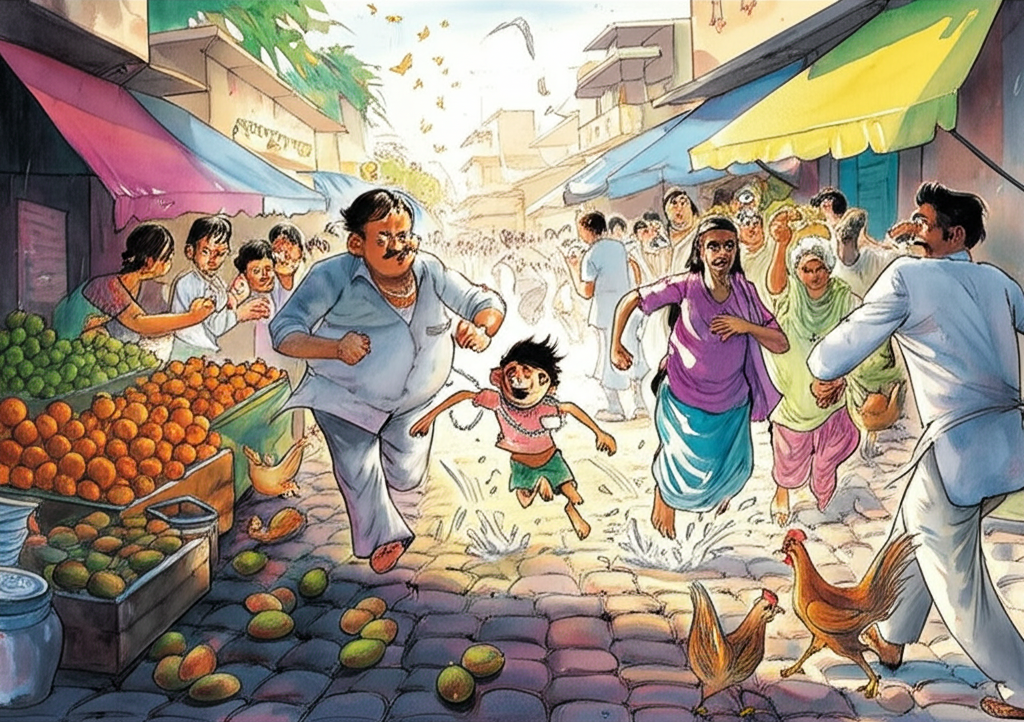
One day I heard them talking about going to the market to buy an engagement ring. I decided I would go with them. But Aunt Ruby didn’t want me around, so I decided I would follow them secretly.
Tutu knew something important was happening, so she decided to follow me. But I didn’t ask her to come, so she also decided to stay hidden.
When we got to the busy market, I got close to Aunt Ruby and Rocky without them seeing me. I waited until they were sitting in a jewelry store before I walked by and saw them, like it was an accident. Aunt Ruby wasn’t happy to see me, but Rocky waved and said, ‘Come join us! Help your aunt pick out a beautiful ring!’
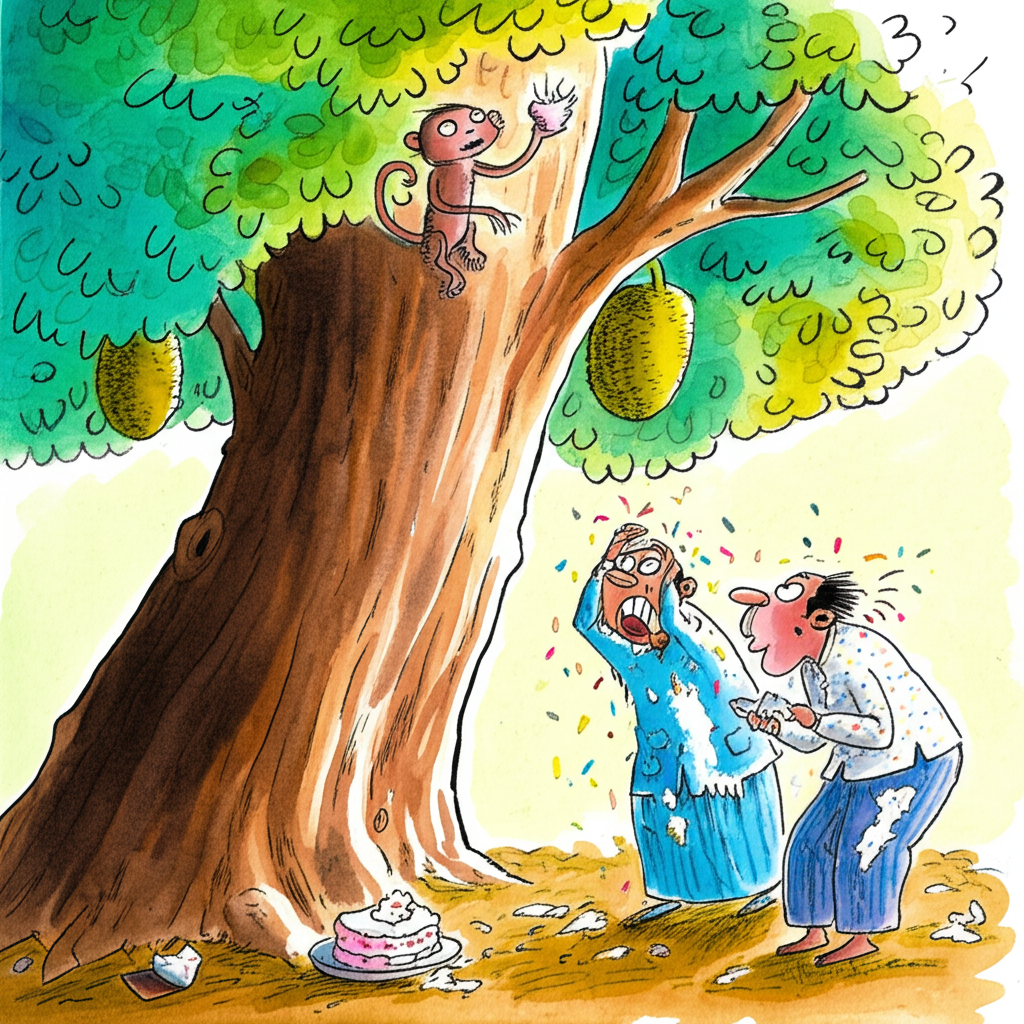
The big day came, and the wedding guests went to the little church outside of Dehra—a town with a church, two mosques, and some temples.
I wanted to dress Tutu up as a bridesmaid and bring her along, but no one except Grandfather thought it was a good idea. So I was a good boy and locked Tutu in the shed. But I left the skylight open a little. Grandmother always said fresh air was good for kids, and I thought Tutu should have some too.
The wedding went perfectly. Aunt Ruby looked beautiful, and Rocky looked like a movie star.
Grandfather played the organ very loudly, so the choir could barely be heard. Grandmother cried a little. I sat quietly in a corner with the little turtle on my lap.
When the service was over, we walked out into the sunshine and went back to the house for the party.
The food was on tables in the garden. The gardener was in charge, so everything was perfect. Tutu was behaving herself. She had used the skylight to get some fresh air outside, and now she was sitting next to the wedding cake, protecting it from crows, squirrels, and the goat. She greeted the guests with happy squeals.
It was too much for Aunt Ruby. She got angry and ran at Tutu. Tutu knew she wasn’t welcome, so she jumped away, taking the top layer of the wedding cake with her.
Major Malik led us into the orchard, where we found Tutu at the top of the jackfruit tree. She started throwing pieces of wedding cake at us. She also got a bag of confetti and showered us with it when she ran out of cake.
‘That’s more like it!’ said Rocky. ‘Now let’s go back to the party, everyone!’
Uncle Benji and Major Malik stayed behind to chase Tutu away. He kept throwing stones at the tree until he got a big piece of cake right on his nose.
He grumbled and went back to the party, leaving the major to fight Tutu.
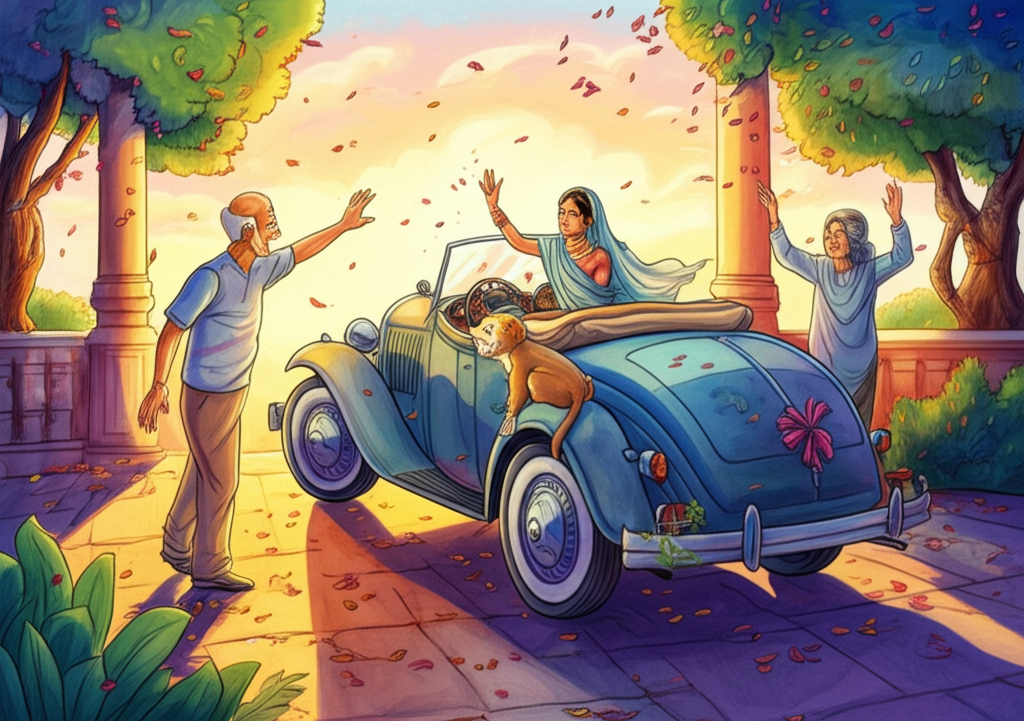
When the party was over, Uncle Benji drove the old car out of the garage and up to the porch steps. He was going to drive Aunt Ruby and Rocky to the nearby mountains for their honeymoon.
Aunt Ruby got into the back seat while her family and friends watched. She waved to everyone. She leaned out the window and let me kiss her goodbye. Everyone wished them good luck.
As Rocky started to sing, Uncle Benji pushed down the gas pedal. The car shot forward in a cloud of dust.
Rocky and Aunt Ruby kept waving to us. And so did Tutu, from her perch on the back bumper! She was holding a bag and showering confetti on everyone in the driveway.
‘They don’t know Tutu’s with them!’ I said. ‘She’ll go all the way to the mountains! Will Aunt Ruby let her stay with them?’
‘Tutu might ruin the honeymoon,’ said Grandfather. ‘But don’t worry—our Benji will bring her back!’